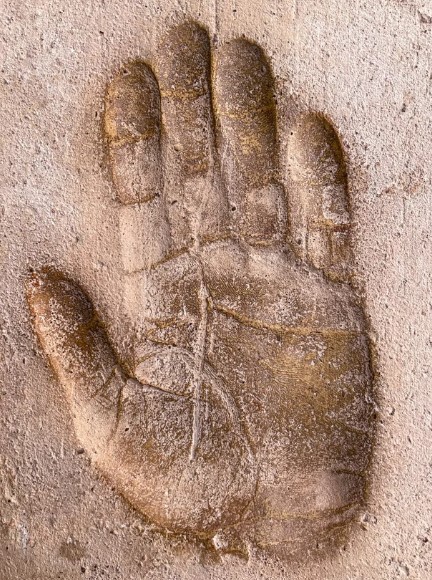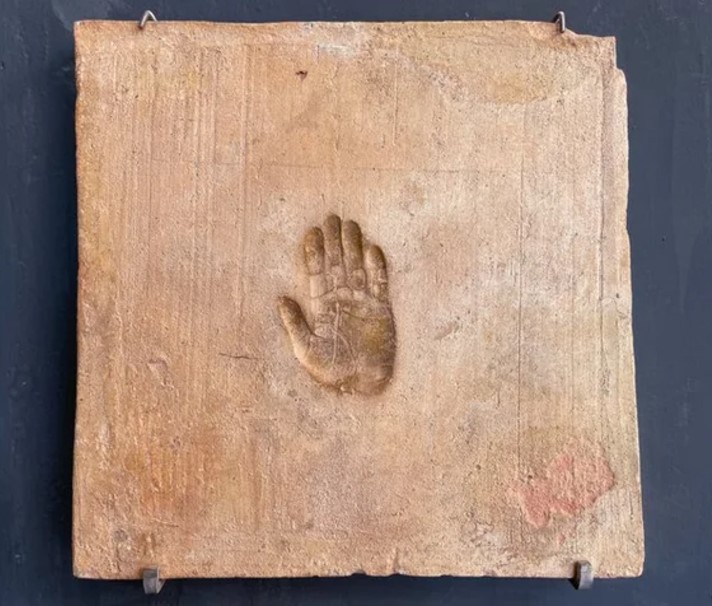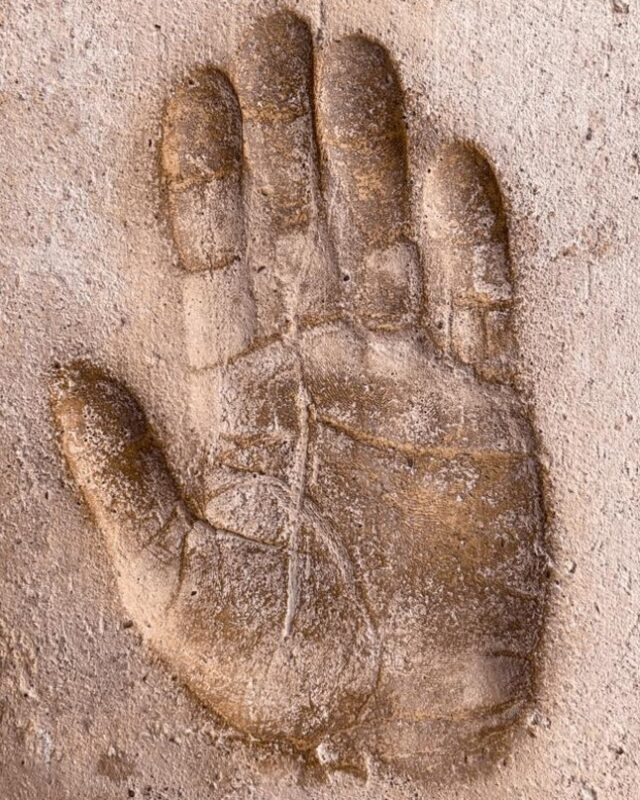In the bustling ancient Roman city of Cherchell, Algeria, a single brick stands out among countless others. This brick, over 2,000 years old, is an Old Roman Handprint of a human hand—a rare and intimate glimpse into the life of a Roman craftsman. The handprint, preserved through centuries, serves as a timeless connection between modern observers and the lives of those who built the Roman Empire. Let’s explore the many mysteries of the world with archeology.dulichvn.net
The Discovery of the Old Roman Handprint
Where It Was Found
Cherchell, known in Roman times as Caesarea, was a vibrant city and a key hub in Roman North Africa. The brick with the handprint was discovered during archaeological excavations, among other artifacts that reveal the city’s Roman past. This ancient city was renowned for its impressive architecture, from grand theaters to aqueducts, and this brick serves as a small yet significant piece of its history

The Unique Handprint
What makes this brick remarkable is the unmistakable imprint of a human hand. Experts suggest the handprint belonged to a large Roman man, likely a worker or craftsman. As he pressed his hand into the soft clay before the brick was fired, he unknowingly left behind a personal mark that would survive for millennia.
Closer Inspection
Modern technology allows archaeologists to study the handprint in remarkable detail. The fingerprints and skin textures are still visible, providing insights into the physical characteristics of the man. This level of preservation makes the brick a unique artifact in the study of Roman craftsmanship.
See more: The Abandoned City of Thamugadi: A Roman Mystery
The Significance of the Old Roman Handprint
A Rare Personal Connection
In a world dominated by monumental architecture and grandiose statues, the handprint offers a deeply personal connection to the past. While most Roman artifacts reflect the power and influence of the empire, this brick reminds us of the individual laborers whose efforts built the empire’s foundation

Insights Into Roman Craftsmanship
The handprint also sheds light on the brick-making process in ancient Rome. Workers shaped clay into bricks and allowed them to dry before firing them in kilns. Accidental imprints like this one were likely common but rarely survive in such pristine condition.
A Glimpse Into Everyday Life
This artifact highlights the everyday life of Roman workers. It provides a stark contrast to the lavish lives of emperors and elites often depicted in history. The handprint is a reminder of the human stories behind the empire’s grandeur.
See more: Discover the Majestic Colomares Castle: A Hidden Gem in Spain
The City of Cherchell: A Roman Jewel
The History of Cherchell
Originally a Berber settlement, Cherchell became a Roman colony under Emperor Augustus and was renamed Caesarea. The city flourished as a cultural and economic center, boasting theaters, temples, and forums that showcased Roman engineering and artistry.

Cherchell’s Role in the Empire
As a major port city, Cherchell played a critical role in trade and military strategy. It connected North Africa to the Mediterranean world, serving as a melting pot of cultures and ideas.
Modern-Day Cherchell
Today, Cherchell retains echoes of its Roman past. Visitors can explore ruins and artifacts, including the famous brick with the handprint, to connect with a history that shaped the region.
Old Roman Handprint Preservation and Legacy
Why the Brick Matters
Artifacts like the handprint brick are invaluable in preserving the stories of ancient civilizations. They provide tangible evidence of the lives, skills, and humanity of people who lived thousands of years ago.

Challenges in Preservation
Preserving such artifacts is no easy task. Exposure to the elements and human activity can threaten their survival. However, dedicated efforts by archaeologists and historians ensure that these pieces of history remain accessible for future generations.
Connecting the Past to the Present
The handprint serves as a bridge between the modern world and ancient Rome. It is a reminder that history is not just about dates and events but also about the individuals who lived, worked, and left their mark.
Why You Should Visit Cherchell
Explore Roman Ruins
Cherchell offers a wealth of Roman ruins, from amphitheaters to mosaics. The city is a treasure trove for history enthusiasts and a must-visit for anyone interested in ancient civilizations.

See the Handprint Brick
The brick with the 2,000-year-old handprint is one of the most intriguing artifacts on display. Observing it up close allows visitors to connect personally with a worker from antiquity.
Experience the Blend of Cultures
Cherchell is not just about Roman history. The city reflects a blend of Berber, Roman, and Islamic influences, offering a rich cultural tapestry for visitors to explore.
Conclusion: A Timeless Human Touch
The 2,000-year-old Old Roman Handprint Brick from Cherchell is more than an archaeological artifact—it’s a profound connection to the past. It represents the humanity of the laborers who contributed to the Roman Empire’s greatness, a story often overshadowed by the grandeur of emperors and generals.
Visiting Cherchell to see this unique artifact is a chance to step into history and experience the tangible legacy of a civilization that continues to fascinate. Through this single handprint, the stories of ancient Rome come alive, reminding us that history is shaped not only by great leaders but also by the countless individuals who left their mark, one brick at a time.


CÁC TIN KHÁC
Mark Twain & Olivia Langdon: A 36-Year Love Story Filled with Laughter and Devotion
The Tollund Man: A 2,400-Year-Old Mystery Preserved in a Danish Bog
Skara Brae: Scotland’s Hidden Neolithic Village
Porta Nigra: The Hidden Depths of Trier’s Iconic Roman Gate